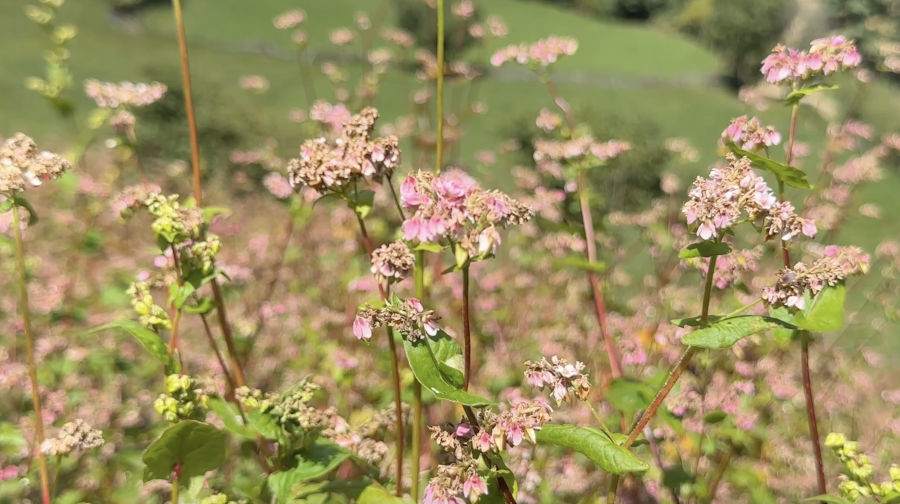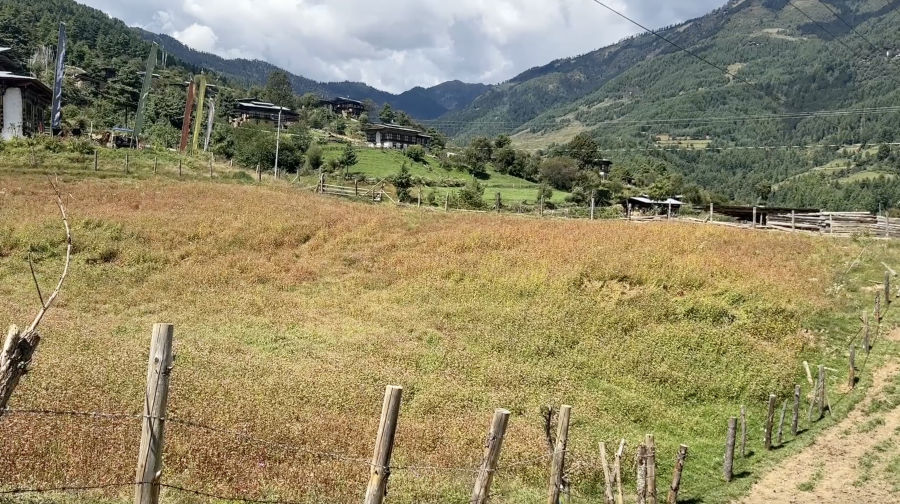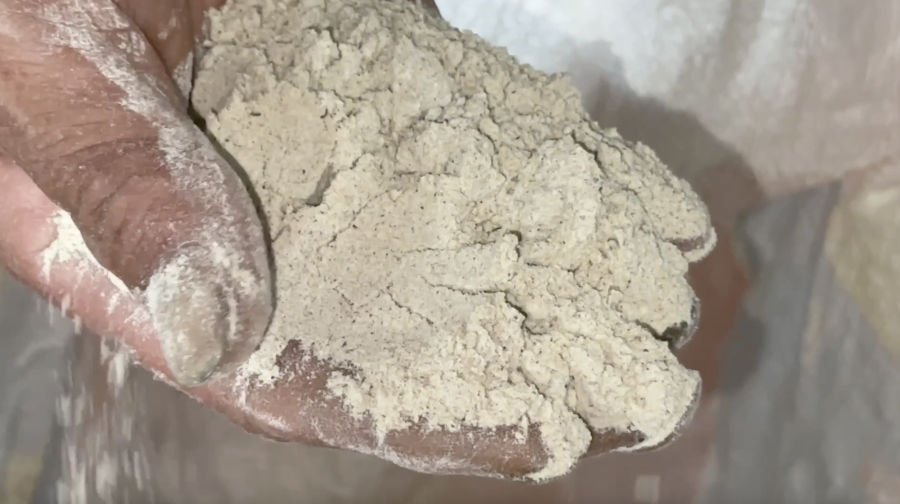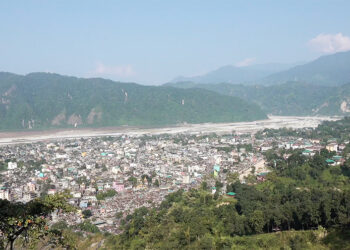 Fuelled by a growing demand, farmers of Bepzur in Bumthang are turning to large-scale sweet buckwheat cultivation. Easy access to the market and a newly installed flour processing mill have further encouraged them to upscale production, making it a promising cash crop. However, the venture is not without its fair share of challenges. Unpredictable weather and persistent wildlife encroachment continue to hinder crop production.
Fuelled by a growing demand, farmers of Bepzur in Bumthang are turning to large-scale sweet buckwheat cultivation. Easy access to the market and a newly installed flour processing mill have further encouraged them to upscale production, making it a promising cash crop. However, the venture is not without its fair share of challenges. Unpredictable weather and persistent wildlife encroachment continue to hinder crop production.
Much of the dry land at Bepzur in Tang Gewog is covered in a sea of sweet buckwheat. In some parts of the village, harvesting has already begun.

40-year-old Tshewang Lhamo has doubled the cultivation of the crop. From growing it on over 50 decimals last year, she expanded cultivation to 1.5 acres this time.
She sells the flour for Nu 120 per kilogram from her doorstep. Tshewang says that although profitable, growing sweet buckwheat has its share of problems. Recent incessant rain and frequent wild boar encroachment damaged her crop.
“In the past, we were unable to mitigate wildlife encroachment, and there was no market to sell our produce, so we maintained sweet buckwheat cultivation to self-consumption only. Now with increasing demand for the crop we can sell the sweet buckwheat flour easily fetching good profit margin. So, I decided to cultivate more but the recent incessant rain, and continued encroachment by wild hogs left me skeptical of harvest, this year.”
She is not alone, almost every resident of Bepzur grows both sweet and bitter buckwheat for self-consumption and commercial purposes.
49-year-old Palden Sangay is assessing his crop yield after wild boars dug up parts of his two-acre sweet buckwheat field. Fresh boar droppings show that they have been feasting the crop for quite some time now.
“In the past, we depended on cereals such as wheat, barley, and buckwheat. However, due to human wildlife conflict production dwindled and only a few grew for self-consumption. It is slowly picking up now. Following a bountiful profit last year, I put more effort this time, by ploughing the field several times for better yield,” said Palden Sangay.
Sangay Phurba, another sweet buckwheat grower in Bepzur says wild boars are a nightmare for the farmers. “It is disappointing to see the animals wreaking havoc on the harvest we have worked so hard for. We have electric fencing, but it is not effective anymore. Last year, such encroachment was minimal, so we did not have to guard the fields. This year is worse.”
Farmers here also grow wheat, barley, and paddy.
“There is no problem in selling our produce. We receive orders from people inquiring about the availability of wheat, barley and buckwheat flour. But, the intrusion by the boar is challenging,” said Yeshi, a resident of Bepzur in Tang Gewog.
Despite the challenge, there is hope. A multifunction flour mill, established for Bepzur Women Group last year by Bhutan Association of Women Entrepreneurs, BAOWE, co-funded by the government is encouraging them to continue upscaling production.
The machine has the capacity to mill up to 180 kilograms of flour in an hour.

The story is a reminder of how right support can transform farmers’ lives. By increasing production, the initiative is helping the country move closer to its goal of food self-sufficiency by 2029.
Namgay Wangchuk, Bumthang
Edited by Phub Gyem







